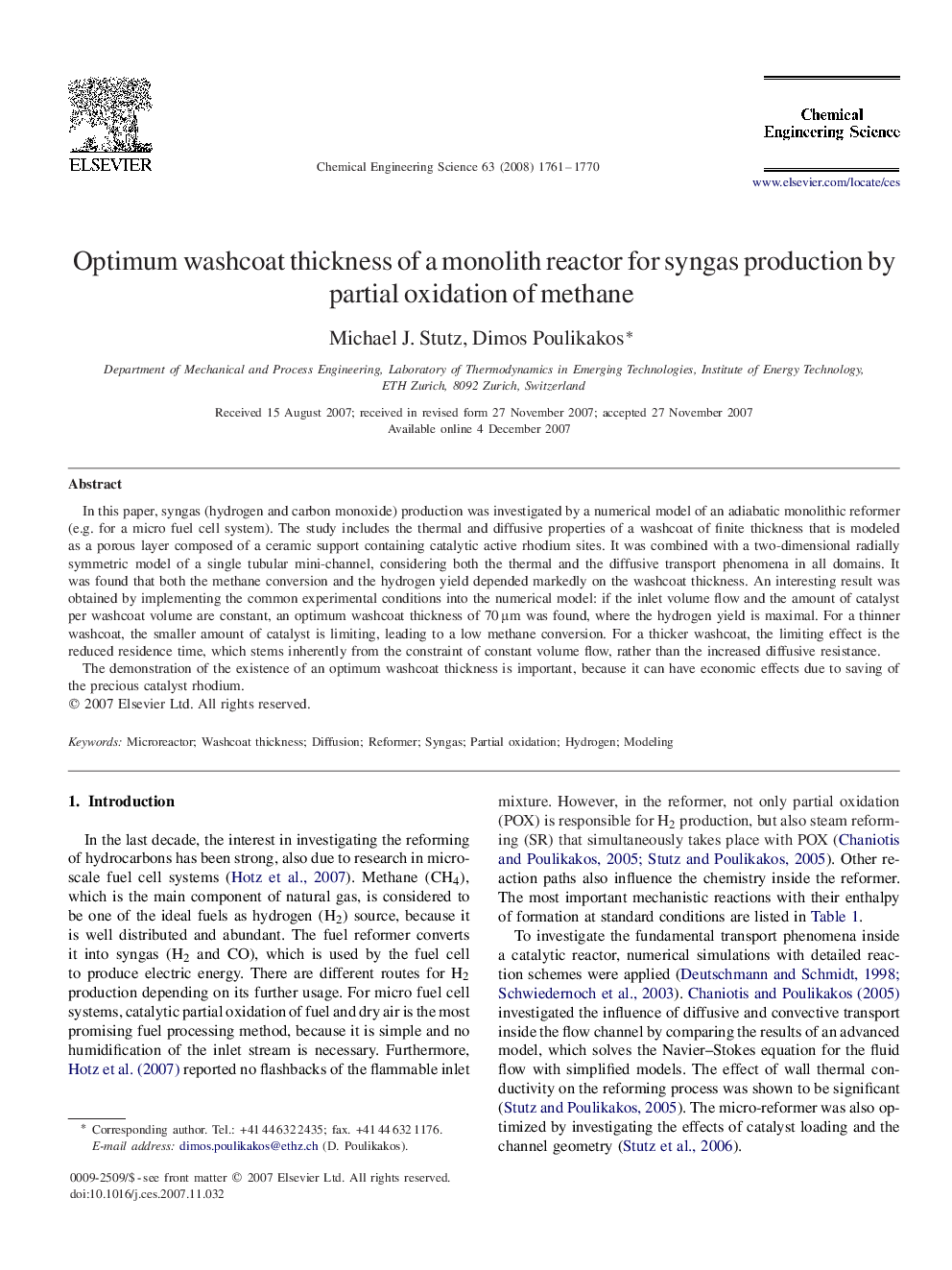| Article ID | Journal | Published Year | Pages | File Type |
|---|---|---|---|---|
| 158242 | Chemical Engineering Science | 2008 | 10 Pages |
In this paper, syngas (hydrogen and carbon monoxide) production was investigated by a numerical model of an adiabatic monolithic reformer (e.g. for a micro fuel cell system). The study includes the thermal and diffusive properties of a washcoat of finite thickness that is modeled as a porous layer composed of a ceramic support containing catalytic active rhodium sites. It was combined with a two-dimensional radially symmetric model of a single tubular mini-channel, considering both the thermal and the diffusive transport phenomena in all domains. It was found that both the methane conversion and the hydrogen yield depended markedly on the washcoat thickness. An interesting result was obtained by implementing the common experimental conditions into the numerical model: if the inlet volume flow and the amount of catalyst per washcoat volume are constant, an optimum washcoat thickness of 70μm was found, where the hydrogen yield is maximal. For a thinner washcoat, the smaller amount of catalyst is limiting, leading to a low methane conversion. For a thicker washcoat, the limiting effect is the reduced residence time, which stems inherently from the constraint of constant volume flow, rather than the increased diffusive resistance.The demonstration of the existence of an optimum washcoat thickness is important, because it can have economic effects due to saving of the precious catalyst rhodium.
